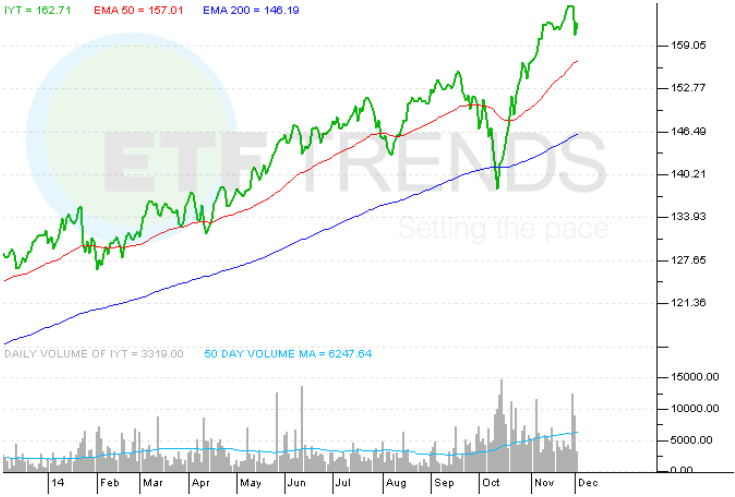The ETF Boom US News
Post on: 31 Март, 2015 No Comment

Exchange-traded funds are increasingly popular, but severe risks exist.
Golf tournaments are staples of the summer television season. The lazy, slow pace of play is a perfect fit for hot, idle Sunday afternoons. This pace is also perfect for seemingly endless commercials, most of which will be dominated by advertisements for financial services firms.
During these TV spots, targeted at retail investors, these firms boast about their broad selection of mutual funds, annuities, and other investment vehicles. This year, however, many of these advertisements focus on a relatively new and increasingly popular product: exchange-traded funds, also called ETFs.
[See U.S. News Best ETFs .]
In recent years, these funds, designed to track indexes of stocks, bonds, or commodities, and traded on daily exchanges, have undergone what many in the financial services industry are terming a boom. According to the ETF Industry Association, at the end of May, ETFs accounted for more than $1.14 trillion, an increase of 2 percent from the previous month. There are now 1,465 ETF products available, up from 1,254 a year ago.
The rapid growth of the ETF industry is attracting large, institutional investors. But as the golf commercials indicate, financial services firms are now targeting retail clients as potential ETF investors.
According to money managers and ETF experts, these funds can play a key role in asset allocation strategies for individuals. But experts also warn that the current popularity of ETFs does not mean that they are the proper vehicles for everyone. And there’s always a chance the ETF boom could become the ETF bust.
Similar to mutual funds, but with a primary advantage. The typical ETF tracks an index, meaning the value of the fund is tied to the value of a stock market or index, like the Dow Jones Industrial Average or S&P 500 stock index. Other ETFs follow currency, bond, or commodity indexes.
ETFs closely resemble mutual funds. They are comprised of different stocks (or bonds or commodities, depending on the fund), allowing investors to spread risk by lessening exposure to loss in a specific stock.
But two fundamental differences between ETFs and mutual funds illustrate the primary advantage of ETFs, according to Tom Graves, S&P Capital IQ’s ETF analyst.
The first is that ETFs are actively traded during the day, allowing traders to react to market swings. Mutual funds, on the other hand, can only trade at the close of business each day. There’s been a lot of volatility in the stock markets over the last few years, Graves says. The equity ETFs provide some potential advantages over buying … mutual funds.

The second advantage is transparency. Mutual funds are infrequently required to disclose the stocks that comprise them. ETFs, on the other hand, allow investors to see the stocks that make up the fund daily. They have an advantage in terms of transparency, in terms of allowing investors to know what’s in the fund on a daily basis, Graves says.
ETFs typically charge lower management fees than mutual funds. They also provide some tax advantages, such as allowing investors to delay paying capital gains taxes on money in the fund until the ETF is sold.
As ETF popularity grows, education is required. Graves says the growing popularity of the ETF industry demands that retail investors educate themselves on how the funds work before trading in the market.
My sense is that the education of retail investors on what are ETFs and what are their choices is an evolving process, he says. ETF providers and financial advisers are talking to their clients about the choices out there, and it’s not surprising to me that there is a media presence for ETFs in terms of advertising. The market is becoming increasingly competitive.
Todd Douds, senior vice president of research and operations at the Fort Pitt Capital Group in Pittsburgh, says that without this education, investors could easily be caught up in the ETF boom without understanding how the products work and the risks associated with them. He specifically voiced concerns about leveraged ETFs, or funds that use financial derivatives and debt to maximize returns rather than simply mimic an index.














